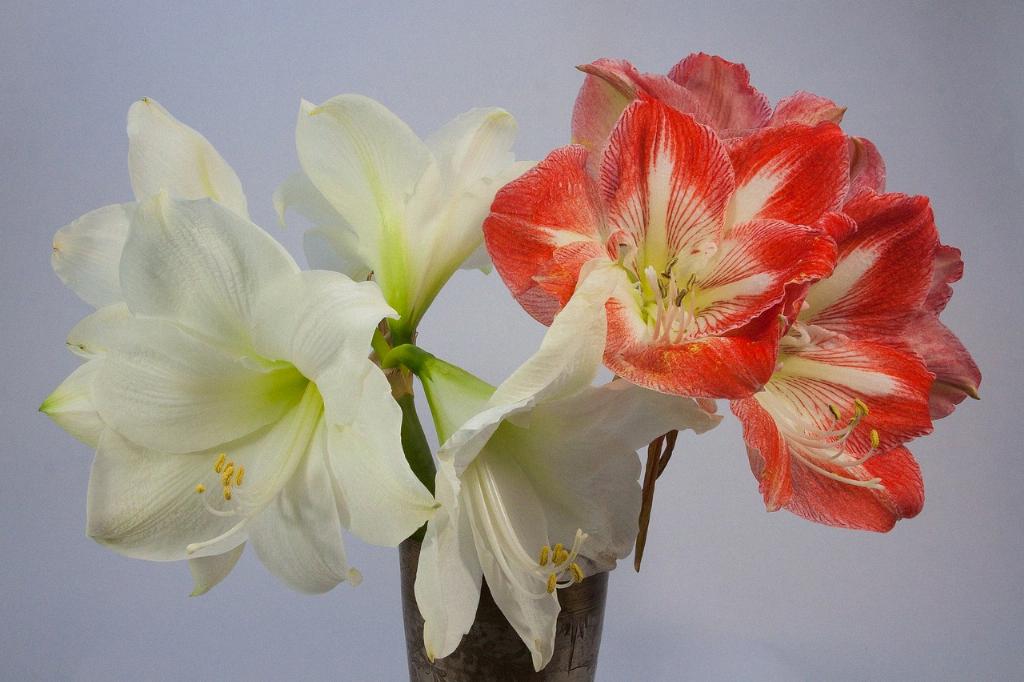Planting amaryllis bulbs is a rewarding and relatively simple process that can bring vibrant color and beauty to your garden or indoor space. Whether you’re a seasoned gardener or a beginner looking to add some flair to your surroundings, growing amaryllis is a great way to enhance your green thumb skills. In this guide, we’ll walk you through the steps of planting amaryllis bulbs to ensure they thrive and bloom magnificently.
1. Selecting the Right Bulb
The first step in planting amaryllis bulbs is to choose high-quality bulbs that are firm and free from any signs of damage or rot. Look for bulbs that are plump and heavy, as these are indicators of a healthy bulb that is ready to grow. You can purchase bulbs from a reputable nursery or garden center to ensure you’re starting with the best possible material.
2. Choosing the Planting Location
When deciding where to plant your amaryllis bulbs, consider the lighting conditions and temperature requirements of the plant. Amaryllis thrives in bright, indirect light, so choose a location that receives ample sunlight but is protected from harsh direct sunlight. Additionally, ensure the planting area has well-draining soil to prevent waterlogging, which can lead to root rot.
3. Preparing the Planting Site
Prepare the planting site by loosening the soil to a depth of about 12 inches and removing any rocks or debris that may inhibit root growth. If planting in a pot, choose a container with drainage holes to allow excess water to escape. Fill the pot with well-draining potting mix, leaving enough space for the bulb to be planted with its neck above the soil line.
4. Planting the Bulb
When planting the amaryllis bulb, position it with the neck at, or slightly above, ground level if you live in frost-free areas. If frost is a concern, bury the bulb with 5 or 6 inches of soil above it and top it off with a layer of fine mulch. Water the area thoroughly after planting to provide the bulb with the moisture it needs to kickstart growth.
5. Providing Adequate Care
After planting, ensure your amaryllis bulb receives adequate care to support healthy growth. Water the plant regularly, keeping the soil consistently moist but not waterlogged. Fertilize the plant with a balanced fertilizer every few weeks to supply essential nutrients for blooming. Keep an eye on the plant for any signs of pests or diseases and address them promptly.
6. Supporting Growth
As the amaryllis bulb begins to grow, you may need to provide additional support to prevent the tall flower stalks from bending or breaking. Use stakes or bamboo supports to gently prop up the stems as they grow taller, ensuring the plant maintains an upright and attractive appearance.
7. Monitoring Progress
Monitor the progress of your amaryllis plant as it develops and blooms. Enjoy the gradual emergence of the flower buds and the eventual opening of the stunning blooms. Take note of any changes in growth patterns or flowering behavior, as these can provide insights into the plant’s health and well-being.
8. Deadheading and Maintenance
After the flowers have faded, deadhead the spent blooms to encourage the plant to focus its energy on producing new growth. Remove any yellowing or withered leaves to maintain a tidy appearance and prevent the spread of diseases. Continue to water and fertilize the plant to support future blooming cycles.
9. Overwintering Bulbs
If you live in a region with cold winters, consider overwintering your amaryllis bulbs indoors to protect them from freezing temperatures. Store the bulbs in a cool, dark place for several months, allowing them to enter a dormant period before you resume normal care and blooming routines in the spring.
10. Propagating Amaryllis
Once your amaryllis plant has matured, you may want to explore propagating it through bulb division or offsets. Carefully separate the daughter bulbs from the main bulb and plant them in individual containers or in the garden to grow into new plants. This method allows you to expand your amaryllis collection and share the beauty with others.

11. Enjoying the Fruits of Your Labor
As your amaryllis bulbs bloom and thrive, take the time to appreciate the beauty and elegance they bring to your surroundings. Admire the vibrant colors, delicate petals, and graceful shape of the flowers as they brighten up your home or garden. Share your success with friends and family to spread joy and inspiration through gardening.
12. Troubleshooting Common Issues
If you encounter any challenges or issues while growing amaryllis bulbs, don’t be discouraged. Common problems such as yellowing leaves, bud blast, or fungal diseases can often be remedied with proper care and attention. Seek advice from gardening forums, books, or local experts to find solutions to specific issues and ensure your amaryllis plants continue to thrive.
